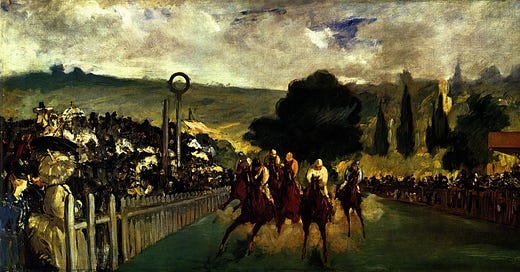The Mudder Report 3.0: Forward Test (Weeks 1-30)
We're growing the forward test; it is currently running ~35 strategies. I hope to add at least 5 additional strategies for Week 31 (9/17-9/22).
Important: There is no guarantee that these strategies will have the same performance in the future. I use backtests to compare historical strategy performance. Backtests are based on historical data, not real-time data so the results shared are hypothetical, not real. There are no guarantees that this performance will continue in the future. Trading futures is extremely risky. If you trade futures live, be prepared to lose your entire account. I recommend using these strategies in simulated trading until you/we find the holy grail of trade strategy.
We haven’t found the holy grail of automated trade strategy yet, but we get closer with every strategy. Click here for links to all strategy descriptions and the most recent performance chart from the backtest.
The Mudder Report is Evolving
If I were to rank the reliability of strategy tests it would be:
1) Simulated live, (BEST)
2) Market replay,
3) Backtest (1 tick level); and,
4) Standard backtest (WORST)
In general, the more reliable the test, the more time it takes to run. Forward tests take time, which is why you rarely see them posted. In the same way that the search for faster, low-latency data fueled the hunt for algorithms that can predict the future, the pinnacle of the backtest is a forward test on real-time data.
To be clear, a backtest is based on historical data that is often flawed. The further back you go, the more flawed it becomes. Instead of historical data, a forward test uses live data on a simulated account. The results are still hypothetical, but you’re one step closer to something that resembles reality.
The simulation will never be as good as the real thing. As a result, there are subtleties in price movement that cannot be captured. While bar calculations like range and Renko might help with manual trading, the complexity in bar calculation is difficult for the simulation to master.
It is possible to run a more granular backtest, but the backtest might take a few days and you’re still going to run into a few issues. It’s all a bit of a hamster wheel. In other words—as always—the tradeoff for greater accuracy is time. To that end, the forward test is about as good as it gets, but it also takes the most time. So the process I recommend is to use the standard backtest to find potential talent, and the forward test to test that talent out. You can read more about how to start your own forward test on a virtual server here.
The Forward Test
These are the results of the forward test. Note, this does not cover all weeks of the year. Today is the last day of the 36th week of 2023, and as of today we’ve captured 30 of those 36 weeks in the forward test. We’ll take this week off for re-optimization and then start Week 31 on 9/17.
The trades are being made on a simulated account, so the results are still hypothetical, but the data driving the simulation is live. The hope is to continue to grow the forward test. We currently have ~71 strategies; ~35 are currently in the forward test. Strategies are started at different points throughout the year. The first column is the strategy, second is the trade count, third is net profit, fourth is the strategy start date; and, the last column is the strategy end date. You’ll also find a break down by profit factor and a link to forward-test results by instrument. This is by far my favorite chart.




